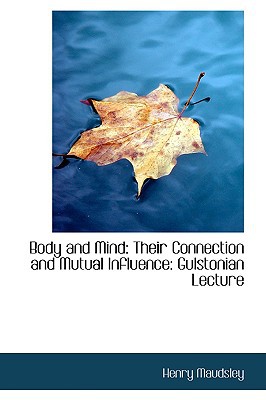

 |

|

The average rating for Body and Mind: Their Connection and Mutual Influence: Gulstonian Lecture based on 2 reviews is 4.5 stars.
Review # 1 was written on 2021-06-20 00:00:00 CHARLES RICHIE CHARLES RICHIESo good. Will definitely be referring back to this one often. |
Review # 2 was written on 2012-08-19 00:00:00 Pierre Mout Pierre Mouti love reading about attachment theory and related fields of study. i've read a lot of the research, and some of the popularizations, and am particularly fascinated with the application of AT in the work of psychotherapy. and of course, i'm always reading with close attention to how i can apply this knowledge to my own relationships and self-regulation. my therapist recently recommended this book to me. i'm so glad to learn more about how implicit, neurologically-wired response patterns that were set up in early attachment relationships affect the way we perceive our current relationships. i'm really appreciating this book's focus on the neurobiological dimension of adult attachment, and finding it useful to gain some more specific understanding of the processes involved in nervous system arousal and regulation in a relational context. thank the gods, we do have plasticity! change is possible, even when early experiences leave us with insecure attachment and relational trauma. in fact, some research cited by Mary Main indicates that five years in a secure adult attachment relationship can bring a person from an insecure state of mind with respect to attachment, into a secure one. the authors integrate information from recent mind-body-brain research, their experience as couple therapists, and the field of attachment studies. they describe in detail interventions that they use, and the rationales behind them, to show how this change process can occur. when partners get real-time experiences of repair, and the awareness of how they trigger each others' unconsciously held, early learned responses, they can begin to change old patterns that cause them to endlessly replicate early attachment wounds. the authors describe sessions with couples in which they use the AAI to bring forth the partners' attachment histories in each others' presence, and then use this knowledge - along with what they learn by observing the couple in sessions - to educate the partners about how problems arise in each one's response to things like eye contact, approach and avoidance behaviors, meetings and partings, proximity and distance. these types of somatic experiences of the other person, which often occur in micro-moments, can trigger fight-flight-freeze responses, or down-regulating withdrawal, without conscious awareness of what just happened to cause such uncomfortable states. thus, by using all this information, a couple can go from constantly triggering each other into misery and fights (or flights) to greater understanding and the ability to calm, soothe, and take pleasure in each other. yes, each individual is responsible for attending to their own healing and development, but this book's focus is on helping partners to become experts in each other's attachment-related needs and tendencies. in a shift from the typical focus on personal growth and me-first love, they recommend prioritizing the partner's comfort and well-being, which helps both partners to feel better, healthier, and more capable, more of the time. |
CAN'T FIND WHAT YOU'RE LOOKING FOR? CLICK HERE!!!